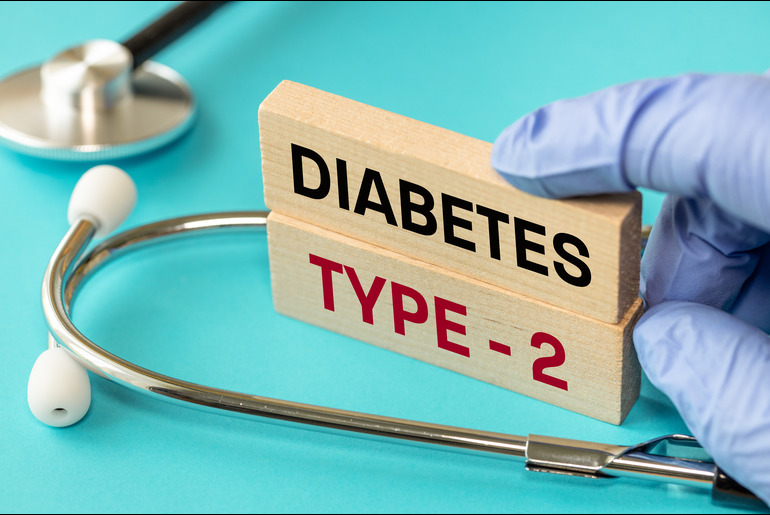Have you ever felt unusually thirsty or found yourself making frequent trips to the bathroom? Or maybe you’ve been feeling more tired than usual despite getting a good night’s sleep? These might seem like everyday issues, but they could be signs of something more serious: Type 2 diabetes. As per a WHO study, there are estimated 77 million people above the age of 18 years in India are suffering from Type 2 diabetes. With diabetes affecting millions in India, understanding this condition is more important than ever.
What is Type 2 Diabetes?
This type of diabetes is a condition where the person becomes resistant to insulin, or the pancreas fails to produce enough insulin. Insulin is a hormone which helps regulate blood sugar levels. Type 2 diabetes develops in adulthood and is often linked to lifestyle factors.
Causes of Type 2 Diabetes
Genetic Factors: If your family has a history of diabetes, your risk of developing the condition increases. Certain ethnic groups are also more susceptible to diabetes.
Lifestyle Factors: A diet high in refined sugars and unhealthy fats, combined with a sedentary lifestyle, can lead to obesity and insulin resistance. Lack of physical activity further exacerbates the problem by reducing the body’s ability to use insulin effectively.
Other Factors: As people age, their risk of developing diabetes increases. Additionally, conditions like high blood pressure and polycystic ovary syndrome (PCOS) are linked to a higher risk of Type 2 diabetes.
Symptoms of Type 2 Diabetes
Increased urination: High blood sugar levels lead to frequent urination.
Increased thirst and hunger: Since the body tries to compensate for lost fluids, thirst and hunger increase.
Unexplained weight loss: Despite eating more, the person might lose weight due to inefficient use of glucose.
Fatigue and weakness: Constant exhaustion and lack of energy are common as the body cannot use glucose properly.
Blurred vision: High blood sugar levels can cause the lenses in your eyes to swell, leading to blurred vision.
Slow-healing sores and frequent infections: High blood sugar levels impair the body’s ability to heal and fight infections.
Numbness in hands and feet: Caused by high blood sugar levels, nerve damage can lead to a loss of sensation in the extremities.
Diagnosis of Type 2 Diabetes Through Blood Tests
Fasting Blood Sugar Test: This test measures blood sugar levels after the person has fasted for at least eight hours. Normal levels are below 100 mg/dL. Levels between 100-125 mg/dL indicate prediabetes, while levels above 126 mg/dL suggest diabetes.
HbA1c Test: This test provides an average blood sugar level over the past two to three months. An HbA1c level of 5.7%-6.4% indicates prediabetes. However, a level of 6.5% or higher indicates diabetes.
Oral Glucose Tolerance Test: This test measures blood sugar levels before and two hours after consuming a glucose-rich drink. Levels above 200 mg/dL after two hours indicate diabetes.
Complications of Type 2 Diabetes
a. Short-term Complications:
Hypoglycemia: Low blood sugar levels tend to cause dizziness, confusion, and fainting. It is essential to manage hypoglycemia by consuming quick sources of sugar and adjusting medications as needed.
Hyperglycemia: High blood sugar levels may lead to dehydration, confusion, and, in severe cases, diabetic coma. Managing hyperglycemia involves monitoring blood sugar levels and adjusting the treatment plan.
b. Long-term Complications:
Cardiovascular Disease: High blood sugar levels damage the blood vessels, which increases the risk of heart disease and stroke.
Neuropathy: Nerve damage from high blood sugar levels can result in pain, tingling, and loss of sensation, particularly in the feet.
Nephropathy: Kidney damage is a common complication of diabetes, leading to chronic kidney disease and, eventually, kidney failure.
Retinopathy: High blood sugar levels may damage the blood vessels in the eyes. This leads to vision problems and, in extreme cases, even blindness.
Foot Problems: Poor blood flow and nerve damage in the feet might lead to infections and ulcers.
Managing Type 2 Diabetes
Lifestyle Modifications: Eating a healthy diet, partaking in regular physical activity, and sustaining a healthy weight are crucial for managing diabetes.
Monitoring and Medications: Regular monitoring of blood sugar levels and taking prescribed medications are essential.
Regular Check-ups: These help monitor your condition and make necessary adjustments to your treatment plan.
Prevention of Type 2 Diabetes
Healthy Lifestyle Choices: Eating a balanced diet, staying active, and avoiding excessive consumption of sugary and fatty foods can help prevent diabetes.
Weight Management: Achieving a healthy weight reduces the risk of developing diabetes.
Regular Health Screenings: These can help detect prediabetes and other risk factors early, allowing for timely intervention.
Final Thoughts
Thoroughly understanding Type 2 diabetes is the first step towards managing and preventing this condition. Remember, small changes in your daily lifestyle can make a significant difference in your health and well-being.
Reference Links:
https://www.who.int/india/health-topics/mobile-technology-for-preventing-ncds#:~:text=In%20India%2C%20there%20are%20estimated,developing%20diabetes%20in%20near%20future).
https://www.mayoclinic.org/diseases-conditions/type-2-diabetes/symptoms-causes/syc-20351193
https://www.mayoclinic.org/diseases-conditions/type-2-diabetes/diagnosis-treatment/drc-20351199
https://www.mayoclinic.org/diseases-conditions/diabetic-hypoglycemia/symptoms-causes/syc-20371525
https://www.mayoclinic.org/diseases-conditions/hyperglycemia/symptoms-causes/syc-20373631
https://my.clevelandclinic.org/health/diseases/21501-type-2-diabetes





Comments are closed.